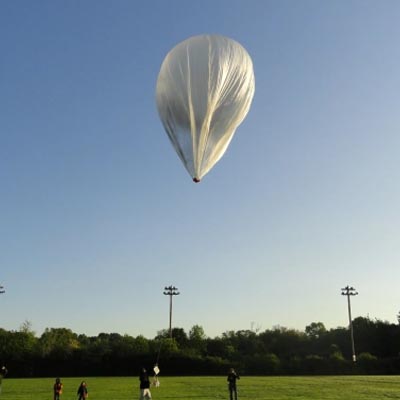A solar balloon is a balloon that gains buoyancy when the air inside is heated by solar radiation, usually with the help of black or dark balloon material. The heated air inside the solar balloon expands and has lower density than the surrounding air. As such, a solar balloon is similar to a hot air balloon. Usage of solar balloons is predominantly in the toy market, although it has been proposed that they be used in the investigation of planet Mars, and some solar balloons are large enough for human flight. A vent at the top can be opened to release hot air for descent and deflation.

Solar balloons
There are many potential explanations for sightings. We recommend eliminating the most common and mundane before jumping to less probable conclusions or you submit a report.
Resources
Traffic Control Trackers
Live flight tracking maps are available for monitoring airline, marine, and balloon traffic and trajectories in real-time or historically around the world.
ADS-B Exchange
FlightAware
Flightradar24
Marine Traffic
PlaneFinder
RadarBox
SondeHub Tracker (tracks both meteorological and amateur radio sondes, including radiosondes used by weather services and enthusiasts.)
SondeHub Amateur (tracks radiosondes launched by amateur radio operators and hobbyists.)
Space/NASA Launches
Planned launches occur regularly all over the globe. These tracks can help identify the potential missions or launches in your area.
SpaceLaunchSchedule.com
SpaceFlightNow.com
RocketLaunch.Live
Satellite Trackers
Satellite tracking can also be done in real-time with the aid of tracking maps. They are also helpful for tracking Starlink launches.
Heavens Above
N2YO
Satellitemap.space
Spot the Station (International Space Station)
Space Weather
There are a number of sites which track solar flares, magnetic storms, asteroids, and other events which are helpful for eliminating explanations related to astronomic phenomena.
Spaceweather.com
Spaceweather.gov
Eyes on Asteroids





